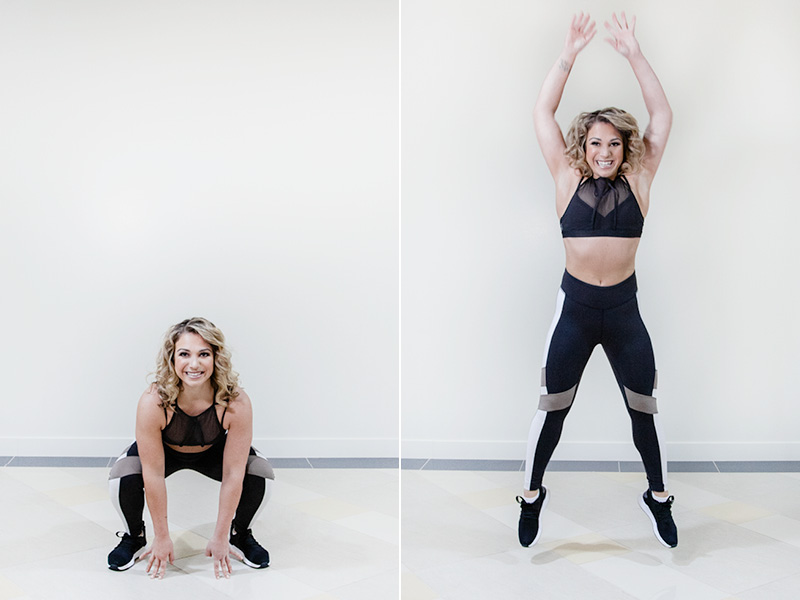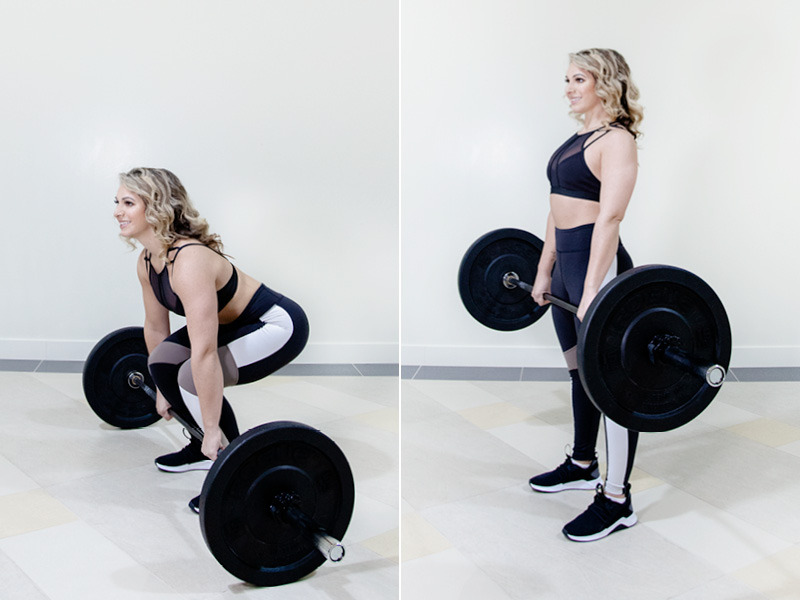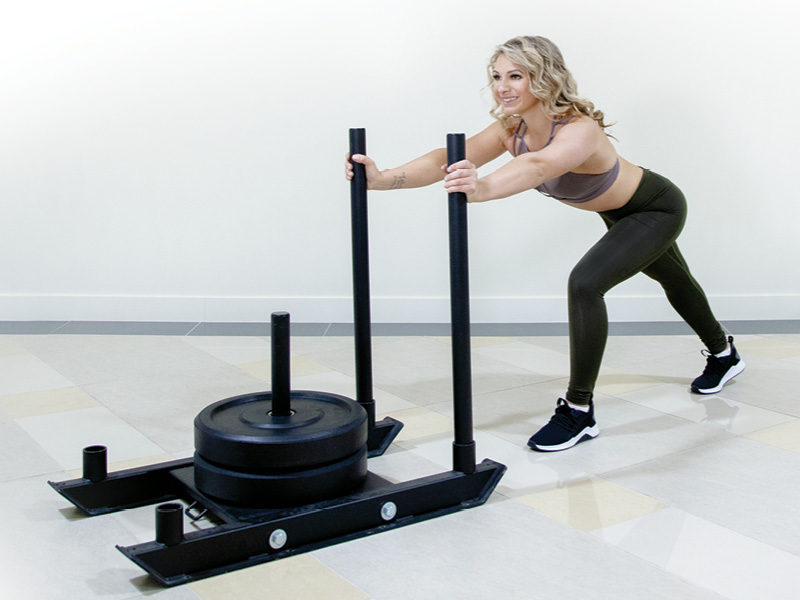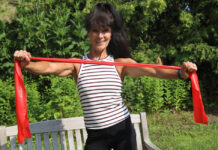If you think weight training as a runner will make you bulky and slow you down, think again! Prioritizing strength into your training has benefits that make it imperative if you’re looking to develop power and run faster with less effort. It will also help with injury prevention by toughening connective tissues, strengthening your muscles, and keeping fatigue at bay to give you that extra speedy sprint towards the finish line to celebrate!
Warm-up
Start with a 5 minute jog or spin, followed by five rounds of:
- 10 squats
- 10 good mornings
- 10 lunges (alternate legs, each leg equals one rep)
- 10 American kettlebell swings
The Workout
For five rounds, complete five repetitions of each movement (five per side for Bulgarian split squats) followed by a 50 meter sled push. Take 60-90 seconds recovery between each round. Increase intensity by adding weight if needed. Perform 2-3 days per week

1. Squat Jumps
Begin in a squat stance (if using dumbbell, kettlebell or barbell, place comfortably in area as noted below). Squat down and then jump up as high as you can. Focus on a soft landing with the balls of your feet as the first point of contact. Absorb the landing impact and then repeat. Keep your head and chest up throughout the exercise.
- Beginner: Bodyweight only
- Intermediate: Hold dumbbell or kettlebell at chest height
- Advanced: Barbell in front rack position, add weight as needed

2. Bulgarian Split Squats
Find yourself a step or bench. Get your back foot elevated on the bench, and go into a forward lunge position with the other leg. Ensure your torso is upright, core is braced and hips are square. Your leading leg should be half a metre or so in front of bench. Lower until your front thigh is almost horizontal to the ground, keeping your knee in line with your foot. Drive up through your front heel back to the starting position, repeat.
- Beginner: Bodyweight only
- Intermediate: Hold dumbbell or kettlebell at chest height
- Advanced: Barbell in front rack position, add weight as needed

3. Deadlift
Stand with your mid-foot under the barbell. Bend over and grab the bar with a shoulder-width grip. Sink your hips until your shins touch the barbell. Lift your chest up and straighten your lower back, ensuring that your back does not become rounded at any point during the entire exercise. Keep your gaze neutral, take a big breath, hold it and stand up with the weight. Hold the weight for a second at the top with glutes squeezed. Then return the weight to the floor by moving your hips back while bending your legs.
- Beginner: Bodyweight with dowel
- Intermediate: Empty barbell
- Advanced: Barbell, add weight

4. Hip Bridge
Lie on your back with your knees bent and your feet flat on the floor. Tighten your glutes and lift your hips off the floor. At the highest position, there should be a straight line from your knees all the way to your shoulders. Hold the contraction for three seconds before returning to the starting position.
- Beginner: Bodyweight
- Intermediate: Place and gently hold dumbbell across hips
- Advanced: Elevated on a stability ball

5. Sled Push
Firmly grip the sled, either holding higher up, or slightly lower depending on personal preference. Set your feet up so they are the same width as your running stance. As you begin to drive the sled forward, use your forefoot, and make sure all your toes remain in contact with the ground. Ensure your spine stays in a neutral position with no curvature at any point. Throughout the entire movement, brace your core to provide the pelvic and spinal stability you need to generate force with your lower body.
- Beginner: No weight added onto the sled
- Intermediate: Moderate weight on the sled
- Advanced: Challenging weight on the sled
















